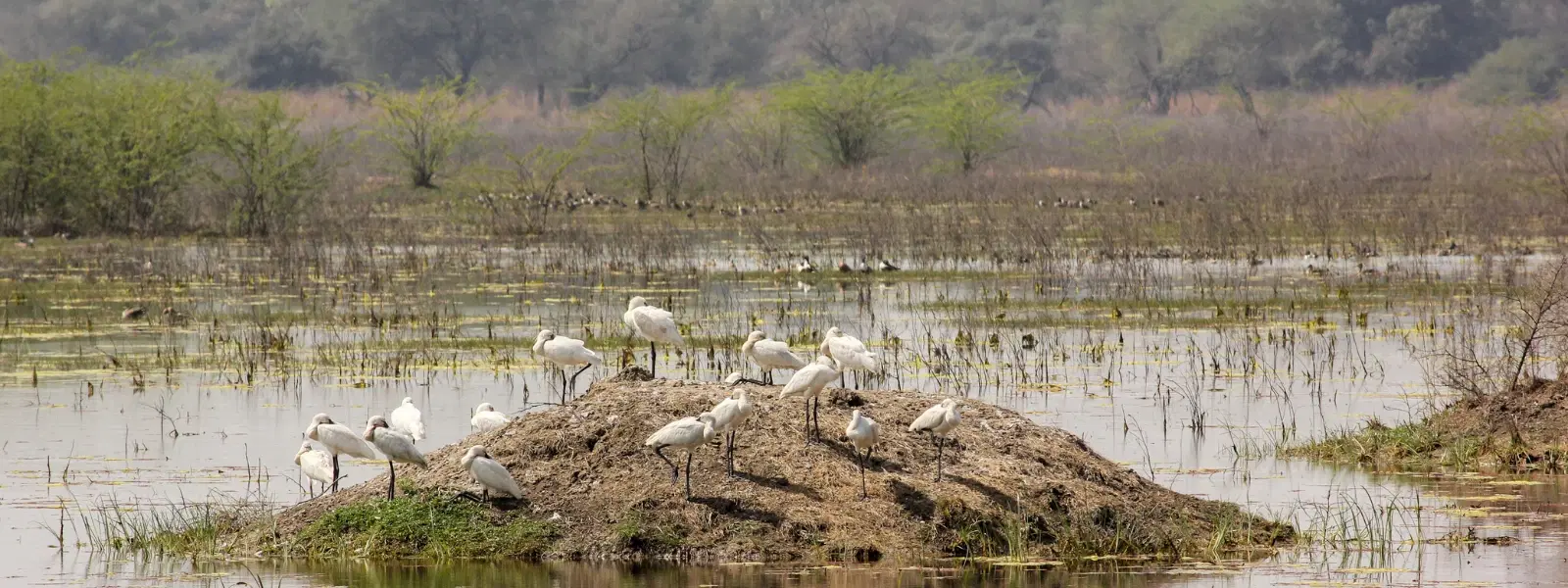
Hotels
•04 min read

India's bird sanctuaries are treasured gems in the country's rich biodiversity, playing a vital role in wildlife conservation. Among these sanctuaries, the Desert National Park in Rajasthan stands out as a beacon of hope for the critically endangered Great Indian Bustard. This blog post explores frequently asked questions about this sanctuary, offering insights into the habitat of the Indian Bustard, ongoing conservation efforts, and the importance of protecting these unique birds and their environment.
The Great Indian Bustard is a large, majestic bird known for its impressive stature and emblematic presence in India's grasslands. With its distinct appearance and striking plumage, it is regarded as a flagship species for the fragile ecosystems it inhabits. Unfortunately, this bird is classified as critically endangered and its survival is tightly interlinked with the health of grassland environments.
Multiple threats have led to the drastic decline in the population of the Great Indian Bustard. Habitat loss due to agricultural expansion and urban development, hunting, and fatal collisions with power lines have all contributed to its endangered status. Recent data indicates that fewer than 150 individuals remain in India, underscoring the pressing need for robust conservation measures.
The answer is the Desert National Park in Rajasthan. This sanctuary, with its rugged landscapes and vast semi-arid expanses, has become synonymous with the Great Indian Bustard. Established to protect the natural habitat of these birds, the park serves as a critical sanctuary for their survival.
The Desert National Park spans a large area across Rajasthan, offering a blend of grassland and semi-arid habitats ideal for the bustard. It is not only a haven for the Great Indian Bustard but also shelters other species of bustards found in similar ecosystems. The sanctuary's unique terrain provides both protection and a natural breeding ground, ensuring that these delicate creatures have the best chance at survival.

The Great Indian Bustard thrives in expansive grasslands and semi-arid regions where sparse vegetation allows it to use its camouflage effectively. Protected areas such as the Desert National Park are crucial in preserving these natural habitats, which are also home to a myriad of other bird species. Local bird reserves in India play an essential role in maintaining the ecological balance vital for the survival of these birds.
Conservation efforts for the Great Indian Bustard involve a range of strategies including habitat restoration, controlled breeding programs, and active community participation. Government and international wildlife conservation initiatives are continuously working to address challenges such as habitat encroachment and illegal hunting. These concerted efforts aim to create a secure environment where the bustard can not only survive but thrive.
The Desert National Park is a top destination for birdwatchers, offering a rare opportunity to observe the elusive Great Indian Bustard in its natural habitat. Alongside this sanctuary, several other bird sanctuaries in India attract enthusiasts who are eager to discover the country's diverse avian life, making the journey both educational and adventurous.
When planning a visit to the Desert National Park, consider the time of year; the best period is between October and March when the weather is pleasant and bird activity is at its peak. Prior to your trip, research any necessary permits, and always adhere to eco-friendly practices to protect the environment. Whether you are a budget traveler, a family planner, or a frequent business traveler, planning ahead ensures an enriching and sustainable experience.
In addition to the Desert National Park, several other reserves across India contribute to the protection of the Great Indian Bustard. These protected areas are vital in preventing the extinction of this rare species. The importance of expanding these conservation zones cannot be overstated, as they form the backbone of efforts to maintain a balanced ecosystem.
Conserving the Great Indian Bustard goes beyond saving a single species. It helps maintain the health of entire grassland ecosystems and protects other endangered birds in India. Sanctuaries like the Desert National Park are instrumental in promoting biodiversity, supporting eco-tourism, and fostering a greater understanding of the intrinsic value of nature.

Did you know that the Great Indian Bustard is considered an indicator species? Its well-being reflects the health of grassland ecosystems. Protecting this bird means safeguarding the habitats of countless other species that rely on these ecosystems.
The Desert National Park in Rajasthan is the most famous sanctuary for Indian Bustards, serving as a critical habitat for this endangered species.
The species faces threats from habitat loss, hunting, power line collisions, and a shrinking population, making it one of the most endangered birds in India.
Recent estimates suggest that fewer than 150 Great Indian Bustards remain in India, highlighting the urgent need for enhanced conservation efforts.
The best time to visit the Desert National Park is between October and March, when the weather is favorable and bird activity is vibrant.
Yes, India also hosts species like the Lesser Florican and the Bengal Florican, which are typically found in similar grassland habitats.
India’s bird sanctuaries, particularly the Desert National Park, are crucial for the conservation of the critically endangered Great Indian Bustard. By exploring its habitat, threats, and the dedicated efforts to protect this species, readers gain a deeper appreciation of wildlife conservation in India. These natural havens are invaluable not only for preserving biodiversity but also for offering enriching experiences for birdwatchers and nature enthusiasts alike.